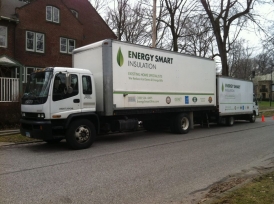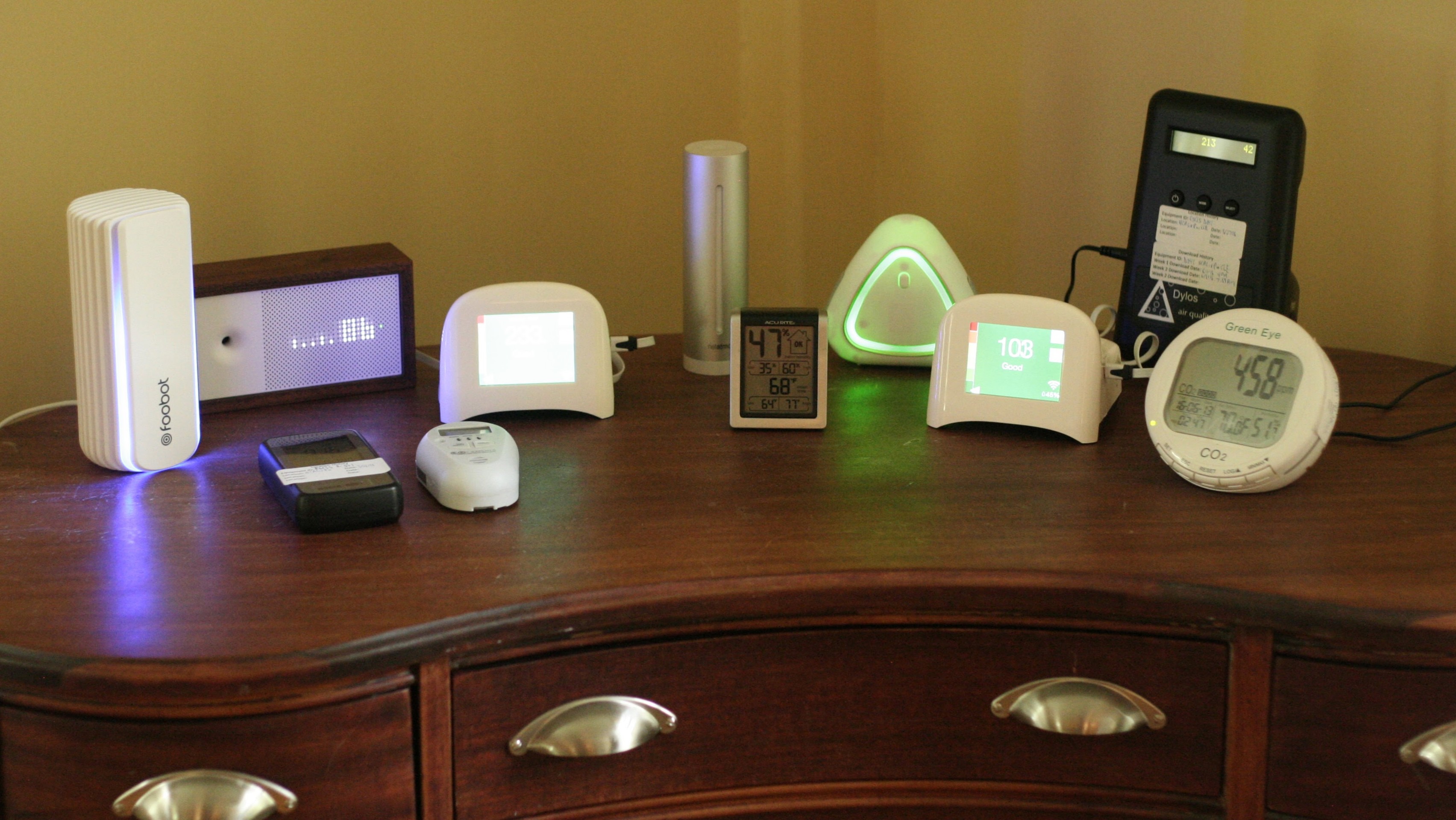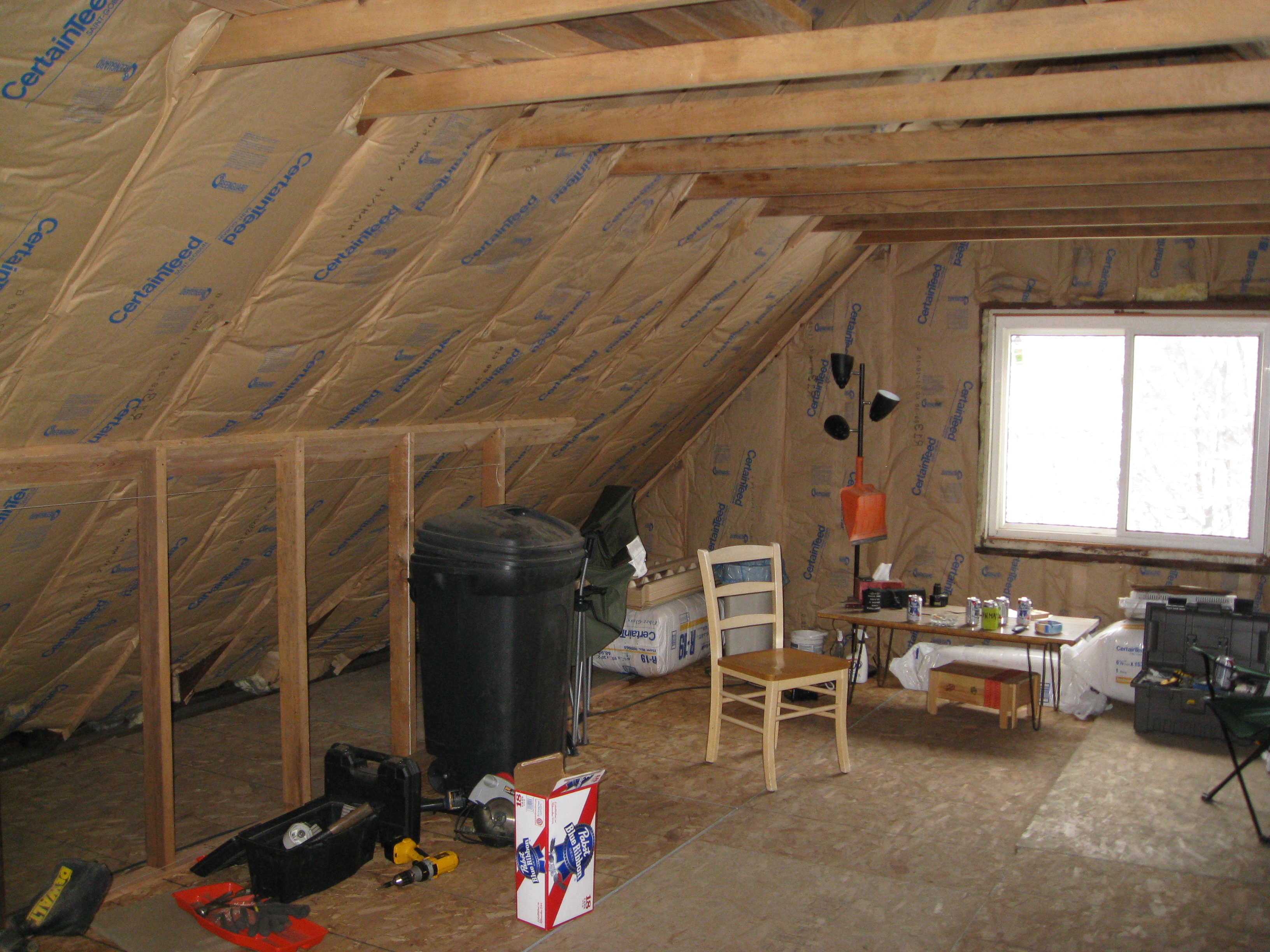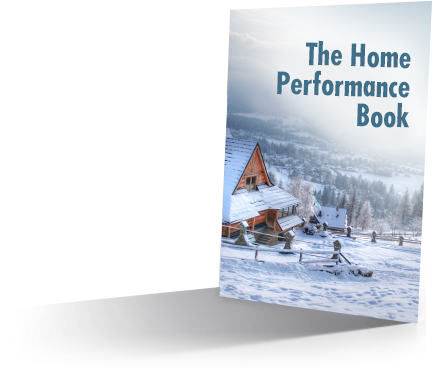Fresh Air Ventilation – Why 2 Duct Systems?
Image Credit: Hamilton Home Products
Musings: Can We Do It All with One Duct System?
Many in the Building Science field feel that we need two duct systems in every home, one for heating and cooling, and one for fresh air ventilation. This simply isn’t necessary in many homes. It’s also very difficult, expensive, and invasive in the 100 million or so existing homes out there. Here is how we can solve this:
Design a right-sized, efficient, variable capacity HVAC system that runs most or all of the time year-round and attach an ERV, HRV, or ventilating dehumidifier to the main duct system. (These three technologies are known as ‘fresh air ventilation.’1)
Fresh air systems probably need to run all or most of the time to be effective. The main objection that causes the thought process of needing two duct systems is that most furnaces and air conditioners don’t run for very long each hour because they are substantially oversized. Why do we put up with that? It’s not that difficult to right size the HVAC, and modern blower motors are inexpensive to run when not attached to ductwork that is too small.
Why do we need to snake a second, smaller ventilation system through a house for ventilation? This adds more air leakage possibilities, complexity, substantial costs, and uses up valuable floor and mechanical system space. In existing homes, this nearly guarantees a homeowner won’t do it unless they have severe Indoor Air Quality (IAQ) problems, and even then it is likely to be a hard sell. As an industry this line of thinking essentially ensures that balanced or supply only fresh air ventilation will never see widespread adoption without a mandate. Doesn’t that seem dumb?.
How to use one duct system to do it all.
In the last year or so with my new business model, I’ve noted that every house under 2000 square feet I’ve worked on ends up with a load between 24,000 and 36,000 BTUs after upgrades.2 This corresponds to a 2 or 3 ton heat pump. It is also smaller than any gas furnace that can be purchased, although most of these homes have an 80,000 or 100,000 BTU furnace in them, which is WILDLY oversized. This means the systems seldom run, and run for very short cycles.
If the load of a home can be brought down to 24,000 BTUs, a 2 stage heat pump can run at 12,000-14,000 BTUs, depending on manufacturer, or 24,000 BTUs. This is enough range to let it run pretty often. Modern fans are inexpensive to run, so they could provide airflow for the fresh air ventilation when heating or cooling is not needed as well.
Alternately, that same 2 ton 2 stage can be strapped on top of a furnace to handle low load situations with the furnace taking over in high load situations when replacing an air conditioner only. I’ve found 2 tons of AC is enough to handle most ‘fixed’ existing homes with Cleveland’s 88 degree cooling design temperature.
Now that the heat pump is running frequently in low load situations because of the 2 (or more) stages, the ventilation system will be effective most or all of the time. It could even be a passive system like this one, using the air handler of the furnace or heat pump to provide the necessary air flow.
Presto! Only one duct system is needed. And most existing homes can be upgraded to have fresh air ventilation for a fairly reasonable cost.
Outdoor Air Quality (OAQ) should be considered for every client’s home.
OAQ in Cleveland is lousy. Cuyahoga county, where Cleveland is located, has an F rating from the American Lung Association, as does Summit County where Akron is located. My home county, Portage Country, gets a C rating. Isn’t it better to filter that air when bringing it into our clients’ homes than letting infiltration supply dirty outdoor air? Energy Smart provides three separate solution packages for most clients, and at least one package includes fresh air ventilation with filtration for every client to provide good IAQ.
It seems odd to me that others have not come to the conclusion that only one duct system is needed yet, has anyone else out there put this hypothesis forward? I intend to test and verify it with my Air Advice IAQ datalogger as these upgrades are installed. Most clients don’t take the option yet, but much of that has been to my lack of clarity of the importance of fresh air ventilation, so I expect uptake will increase.
What do you all think? Can we do it all with one duct system?
Want more? Sign up for the Energy Smart Blog!
Further Reading:
Indoor Air Quality – Humidity is a big part of good IAQ. Here’s the rundown on what IAQ is.
Indoor Environmental Quality (IEQ) – True comfort is more than just thermal comfort. Find out more about what is involved here.
The Science Behind What We Do – Home Performance is rooted in science. Everything is interconnected, and we try hard to keep those connections in mind. Here’s the basics.
1 For those of you out of the Home Performance industry, an ERV (energy recovery ventilator), HRV (heat recovery ventilator), or ventilation dehumidifier are all products that bring outdoor air inside your home, usually with filtration. The first two are ‘balanced’, meaning they bring in as much air as they put out (in theory) and exchange most of the heat or cool as they do so. Ventilating dehumidifiers slightly pressurize a home, they only serve as an intake, not an exhaust. One of these is a good idea in all homes, but particularly more airtight homes that do not leak ‘enough’ to bring fresh air in naturally. (Leaky homes still don’t bring in ‘enough air much of the year, either, if you measure indoor air quality, either.) They are kind of like a window that is open all year, but with very little energy penalty.
2 These projected loads seem to consistently be overestimated as well. They are found by using TREAT software, which gives a very thoroughly padded load that tends to be close to Manual J and a floor by floor load that is closer to reality, but still appears to be overestimated from the Ecobee reports and datalogging that I’ve seen. We can be surprisingly aggressive with equipment sizing and still provide heating or cooling at design temperatures. Here are some screen shots from Ecobee reports.
Get the HVAC Guide

It's free! Make buying a new furnace, air conditioner, or heat pump less stressful.










